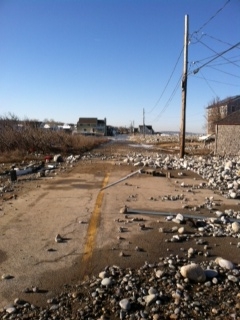During a 45-minute wind storm, the community of Moore, Oklahoma lost at least 24 people as multiple tornadoes touched down May 20. 17 more tornadoes hit the ground near Oklahoma City May 31, killing as many as 12 adults and 6 children. Associated Press reports suggest that if responders could gather all of the debris created by the tornadoes, they would be able to build a mountain of rubble a mile high.
Perhaps the reason for the vast amount of destruction is that on both dates an EF5 tornado touched the ground in Oklahoma- a rare occurrence in any situation, let alone twice in one month. On the EF (Enhanced Fujita) Scale that meteorologists use to measure the strength of tornadoes, a score of 5 is the highest and most damaging in terms of wind force. As the EF5 tornado touched the ground May 31, the 2.6 mile-wide tornado reached wind speeds of up to 295 mph, according to the National Weather Service.
The victims of the recent tornadoes in Oklahoma hold a special place in the hearts of New Englanders with the destruction from 2013’s infamous Blizzard Nemo and Hurricane Sandy fresh in their memories. Weathering this past winter’s record breaking storms in the Northeast, thousands lived without power, evacuated their neighborhoods, and returned home to wreckage and miles of rubble. Towns in the South Shore region, and Scituate especially, relate to the Oklahomans’ struggle to decide on whether to leave their homes before storms and how to clean up in their aftermath.
Junior Emma Hargrove, whose Scituate home lost power for days in the Blizzard Nemo, recognizes how tough it can be for a family to decide to leave behind the comfort of home for safety. “I live near the harbor. We got calls to evacuate and we probably should have, but we didn’t. I wouldn’t want to leave because I’d be afraid to leave my things behind and have them all wash away,” Hargrove said.
As the upcoming summer hurricane season arrives, coastal towns can only wait in anticipation for the weatherman to report the next major storm heading their way. Until then, however, the beach-goers of Scituate are back to their normal summer activities. The town has already dealt with much of the clean-up along the shore line as well as in the West End, and tourist hotspots like the harbor are in working order again. Nevertheless, to the permanent homeowners and year-round inhabitants of Scituate, changes are apparent..
“I’ve noticed a lot more rocks [at Minot Beach] and it kind of ruins it,” junior Meghan James said of her first visit to the popular beach in 2013. The erosion of Scituate’s sand dunes and cliffs continues to be a chief concern for homeowners along the coast because they are exposed more and more to the open ocean’s elements. Even in the wake of natural disasters with less tragic death tolls than those of the tornados in Oklahoma, the feeling of comfort that people deserve in their own homes and communities clearly washed away in the past year’s storms.
